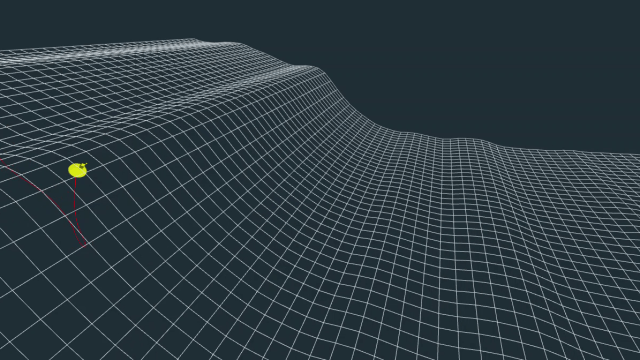A 17.68 m-tall wall of water that appeared off Vancouver Island in 2020 is among the largest rogue waves ever recorded, and it’s the very largest in terms of its proportion to surrounding waves, according to scientists.
New research in Scientific Reports describes the gigantic wave, which appeared off the coast of Ucluelet, British Columbia, on November 17, 2020. The rogue wave reached 17.68 m tall — a height equal to a four-story building.
“Proportionally, the Ucluelet wave is likely the most extreme rogue wave ever recorded,” Johannes Gemmrich, the first author of the study and a research physicist at the University of Victoria, said in a statement. He added that the “probability of such an event occurring is once in 1,300 years.”
The size of this wave is downright terrifying and further evidence that suddenly appearing towers of water are more than just mariners’ tales. Rogue waves are like normal waves, except they’re more than twice the height of surrounding waves. Despite names like “freak waves” and “killer waves,” these swells are normal oceanic phenomena, though their cause remains poorly understood. They’re likely churned into existence by a variety of factors, such as wind speed, wind direction, water depth, and characteristics having to do with the seafloor. Rogue waves are not to be confused with tsunamis, which tend to be generated by massive displacements of water due to earthquakes, landslides, or volcanic eruptions.
“Only a few rogue waves in high sea states have been observed directly, but they can pose a danger to marine operations, onshore and offshore structures, and beachgoers,” the scientists write in their study. No doubt, the unpredictable nature and power of these mountain-like waves make them especially perilous.
The first rogue wave was detected off the coast of Norway on New Year’s Day in 1995 and given the name “Draupner.” It measured 25.6 metres high, making it taller than the Ucluelet wave. What makes Ucluelet a record-breaker is that it was three times as tall as the surrounding waves, whereas Draupner was just over twice as tall. Scientists have recorded a smattering of other rogue waves, including “Andrea” (2007) and “Killard” (2015), but this plus-sized type of wave probably appears more often than we think — we just don’t know about them.
The monster wave was detected by a 1-metre buoy floating 45 metres above the Pacific seafloor. Victoria-based MarineLabs Data Systems placed its CoastScout sensor buoy — currently one of 26 buoys positioned strategically along coastlines and oceans around North America — at Amphitrite Bank some 7 km from the Vancouver Island shore.
“The unpredictability of rogue waves, and the sheer power of these ‘walls of water’ can make them incredibly dangerous to marine operations and the public,” Scott Beatty, MarineLabs CEO, said in the statement. “The potential of predicting rogue waves remains an open question, but our data is helping to better understand when, where and how rogue waves form, and the risks that they pose.”
MarineLabs plans to increase its fleet to 70 buoys by the end of 2022, which should dramatically improve its monitoring capabilities. And thank goodness for that. There’s still much to learn about these gigantic, and dangerous, swells.
